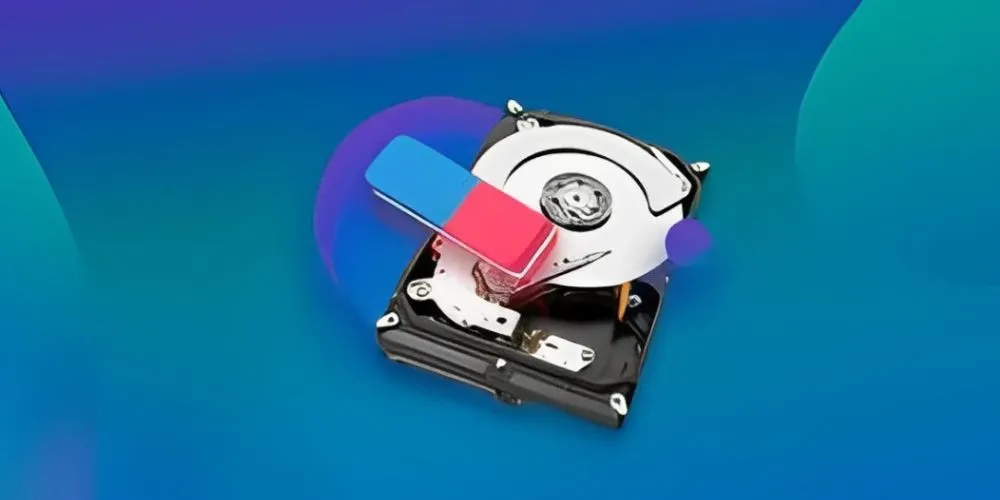In the digital age, losing important files due to accidental deletion or system errors can be a major setback. However, recovering deleted files from a hard drive is possible using the right tools and techniques. This article explores various methods and solutions to help individuals retrieve their valuable data efficiently.
Understanding the Importance of File Recovery
Accidental deletion or loss of files from a hard drive can occur for various reasons, including human error, system crashes, or malware attacks. Regardless of the cause, recovering deleted files is crucial, especially when the files contain sensitive or irreplaceable information.
Symptoms of Deleted Files
Identifying deleted files on a hard drive can be challenging, especially if they were removed unintentionally. However, common symptoms include empty folders, missing files, or unexplained changes in file structure.
Causes of File Deletion
Files can be deleted from a hard drive due to several reasons, including:
- Accidental deletion by the user
- System crashes or errors
- Virus or malware infections
- Formatting of the hard drive
- Hardware failure
Preventive Measures
While file deletion is often unavoidable, implementing preventive measures can help minimize the risk of data loss. Some precautionary steps include:
- Regularly backing up important files
- Using reliable antivirus software to prevent malware infections
- Exercising caution when deleting files
- Avoiding untrusted software or websites
- Monitoring the health of the hard drive for any signs of failure
Effective Solutions for File Recovery
There are many effective and efficient solutions to recovering a deleted or lost file, some of which are discussed below.
Utilize Data Recovery Software
Data recovery software such as WinfrGUI provides a user-friendly interface on Windows 10 for recovering permanently deleted files from a hard drive. By leveraging advanced algorithms, data recovery software tools can scan the hard drive and recover deleted files efficiently. WinfrGUI, in particular, stands out for its compatibility with Windows File Recovery, making it a reliable choice for file recovery tasks.

Explore System Restore Options
Many operating systems offer system restore functionality, allowing users to revert their system to a previous state. This can be useful for recovering deleted files, especially if they were removed recently. However, it’s essential to note that system restore may not always be successful, especially if the files were deleted long ago.
Check the Recycle Bin or Trash Folder
Deleted files are often moved to the Recycle Bin (Windows) or Trash (macOS) folder instead of being permanently erased from the hard drive. Users can restore these files by simply recovering them from their respective folders.
Use File History or Time Machine
File History (Windows) and Time Machine (macOS) are built-in backup solutions that automatically back up files regularly. Users can restore deleted files from these backups, providing an additional layer of protection against data loss.
Consult Professional Data Recovery Services
In cases of severe data loss or hard drive failure, it may be necessary to seek assistance from professional data recovery services. These experts have specialized tools and expertise to recover data from damaged or inaccessible hard drives, albeit at a higher cost.
Tips for File Recovery
File recovery can be a tricky process, but here are some tips to increase your chances of successfully recovering lost or deleted files:
- Act promptly: The sooner you attempt to recover deleted files, the higher the chances of successful recovery.
- Avoid writing to the hard drive: Minimize disk activity on the affected hard drive to prevent overwriting deleted files.
- Use reliable software: Choose reputable data recovery software like WinfrGUI for optimal results.
- Perform regular backups: Implement a robust backup strategy to mitigate the impact of file deletion or loss.
- Seek professional help if needed: When DIY recovery attempts fail, or the data loss is severe, don’t hesitate to consult professional data recovery services.
Expanding further: How to Retrieve Deleted Snapchat Photos
In addition to recovering files from a hard drive, users may encounter situations where they wonder how to get deleted Snapchat photos back. Snapchat is a popular social media platform known for its ephemeral messaging feature, where photos and videos disappear after being viewed. However, it is still possible to recover deleted Snapchat photos using the following methods:
- Check Snapchat Memories: Snapchat automatically saves photos and videos to Memories, allowing users to store and revisit their Snaps. Deleted photos may still be accessible in Memories, even after disappearing from the chat or story.
- Use Snapchat Data Recovery Tools: Several third-party tools and services claim to specialize in Snapchat data recovery. These tools typically scan the device’s storage for remnants of Snapchat data, including deleted photos. However, users should exercise caution when using third-party tools and ensure they are reputable and trustworthy.
- Contact Snapchat Support: Sometimes, users may recover deleted photos by contacting Snapchat Support. While Snapchat’s support team may not always be able to recover deleted content, they can provide guidance and assistance based on the specific circumstances.
- Check Device Backup: If the device has been backed up recently, deleted Snapchat photos may be recoverable from the backup. Users can restore the device from the backup to retrieve deleted photos, including those from Snapchat.
Conclusion
Losing files from a hard drive can be a distressing experience, but it’s not necessarily permanent. With the right tools, techniques, and preventive measures, individuals can recover deleted files and restore their data integrity. Whether utilizing data recovery software like WinfrGUI, exploring system restore options, or seeking professional assistance, various avenues are available for recovering deleted files from a hard drive.










